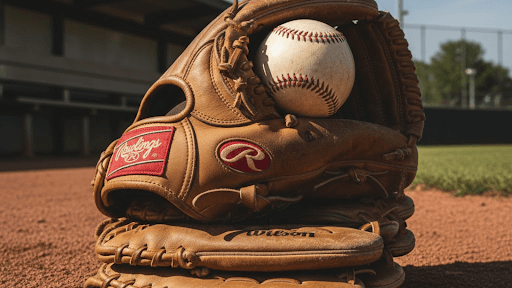7 Things to Consider When Buying a Baseball Glove (So You Don’t Waste Time or Money)

Buying a baseball glove seems straightforward—until you’re standing in front of dozens of options, unsure which one actually fits your position, hand size, or skill level. Worse, many new gloves are stiff, uncomfortable, and require weeks (or even months) of break-in before they’re usable in a real game.
If you’re ready to buy baseball gloves that truly perform from day one, it’s essential to look beyond flashy colors or brand logos. Whether you’re shopping for yourself, your child, or a teammate, making an informed choice saves money, time, and frustration. Here are seven key things to consider before you buy.
1. Know Your Position
Not all gloves are created equal. Infielders need smaller, shallower pockets for quick ball transfers (think shortstops and second basemen). Outfielders benefit from deeper pockets and longer fingers to snag fly balls. Catchers and first basemen use specialized mitts with extra padding and unique shapes. Choosing the right type for your role ensures better control, comfort, and performance.
2. Get the Right Size
Glove size is measured in inches and varies by age and position. Youth players typically use gloves between 10.5” and 12”, while adults use gloves ranging from 11.5” to 13”. A glove that’s too big feels clunky and slows your reaction time; one that’s too small won’t catch the ball reliably. Check sizing charts based on your age and position—and if possible, try it on or measure your current glove.
3. Check the Fit and Comfort
A good glove should feel snug but not tight. Your fingers should reach the tips without straining, and the wrist strap should secure your hand without cutting off circulation. Remember: leather stretches slightly over time, but it shouldn’t feel stiff or painful on day one. If you can’t close the glove easily with one hand, it may not be the right fit.
4. Consider the Break-In Time
This is a significant pain point for many players. Most new gloves come stiff and require oiling, pounding, and repeated use to become playable. If you need a glove for an upcoming game or tournament, look for one that’s already broken in. Fully conditioned gloves have soft leather, a formed pocket, and flexible lacing—so you can play immediately without weeks of prep.
5. Look at the Leather Quality
Higher-quality leather (like full-grain or steerhide) lasts longer, holds its shape better, and performs more consistently—but it’s often stiffer out of the box. Synthetic or lower-grade leather may be softer initially, but won’t endure as many seasons. Think about your commitment level: casual players might prefer a softer, more affordable option, while serious athletes should invest in durable, pro-grade materials.
6. Think About Your Skill Level
Beginners don’t need a $300 pro model. Youth or entry-level gloves offer great value and are often easier to close. Intermediate and advanced players may benefit from customizable lacing, advanced web designs, and premium leather that responds to their playing style. Be honest about where you are in your development—it’ll save you money and frustration.
7. Buy from a Trusted Source
With so many options online, it’s easy to fall for flashy ads or cheap knockoffs. Look for sellers who specialize in baseball gear, offer detailed product info, and—most importantly—stand behind their gloves with guarantees or expert support. If a deal seems too good to be true, it probably is. Trusted providers often include real player reviews, clear return policies, and knowledgeable customer service.
Final Tip: Don’t Wait Weeks to Play
One of the most prominent mistakes players make is assuming all gloves need a long break-in period. That’s simply not true anymore. Thanks to modern conditioning techniques, you can now find gloves that arrive soft, supple, and ready for game day—no oiling, no oven tricks, no sleeping with a ball in the pocket. If you’re short on time or just want to skip the hassle, prioritize gloves that are professionally prepared and field-tested.
By keeping these seven factors in mind, you’ll avoid common pitfalls and find a glove that feels like it was made just for you. Whether you’re stepping onto the diamond for the first time or chasing your 10th championship, the right glove makes all the difference—not just in your catch, but in your confidence.
- Art
- Causes
- Best Offers
- Crafts
- Dance
- Drinks
- Film
- Fitness
- Food
- Jocuri
- Festival
- Gardening
- Health
- Home
- Literature
- Music
- Networking
- Alte
- Party
- Religion
- Shopping
- Sports
- Theater
- Wellness



